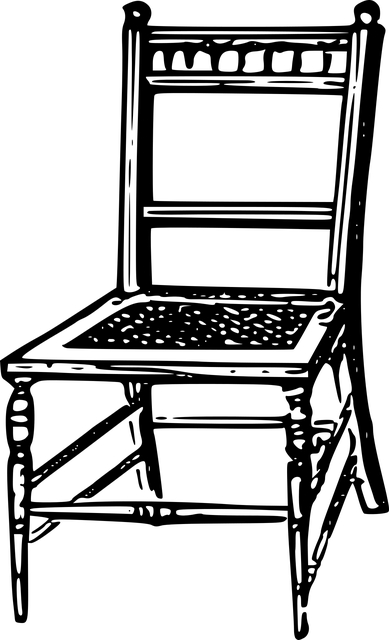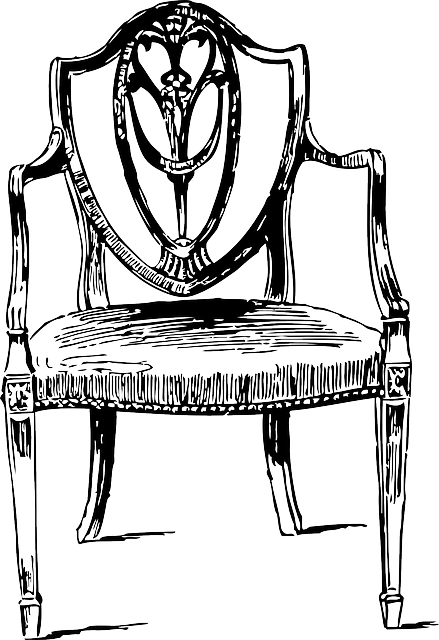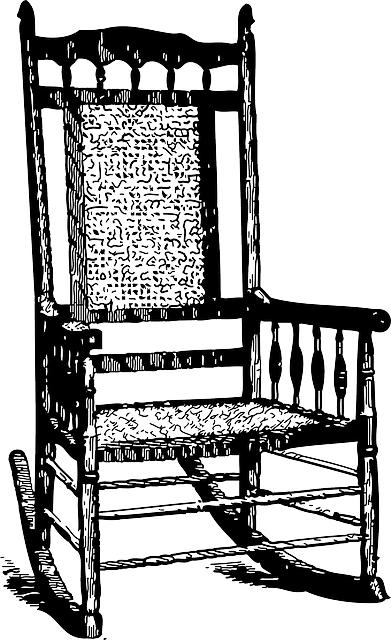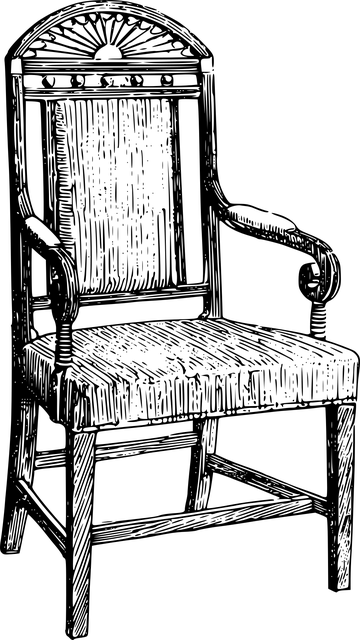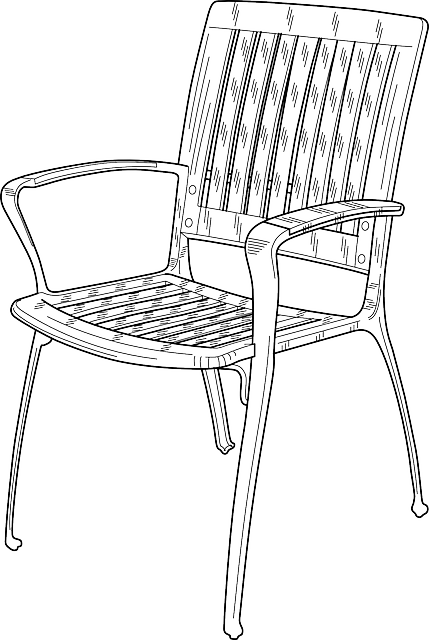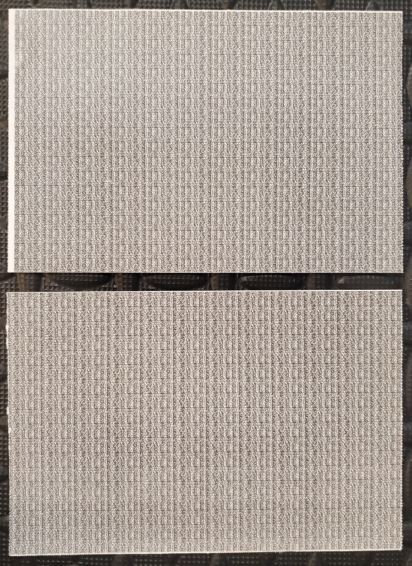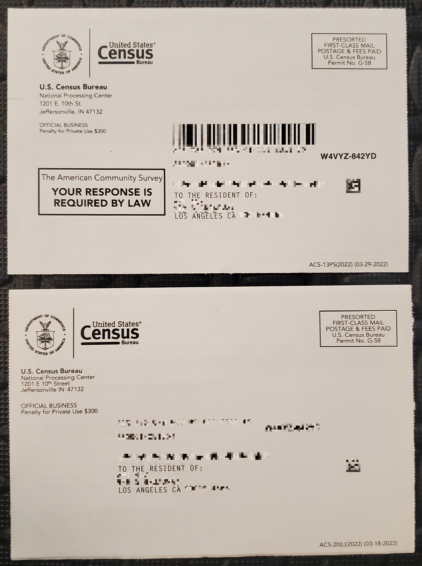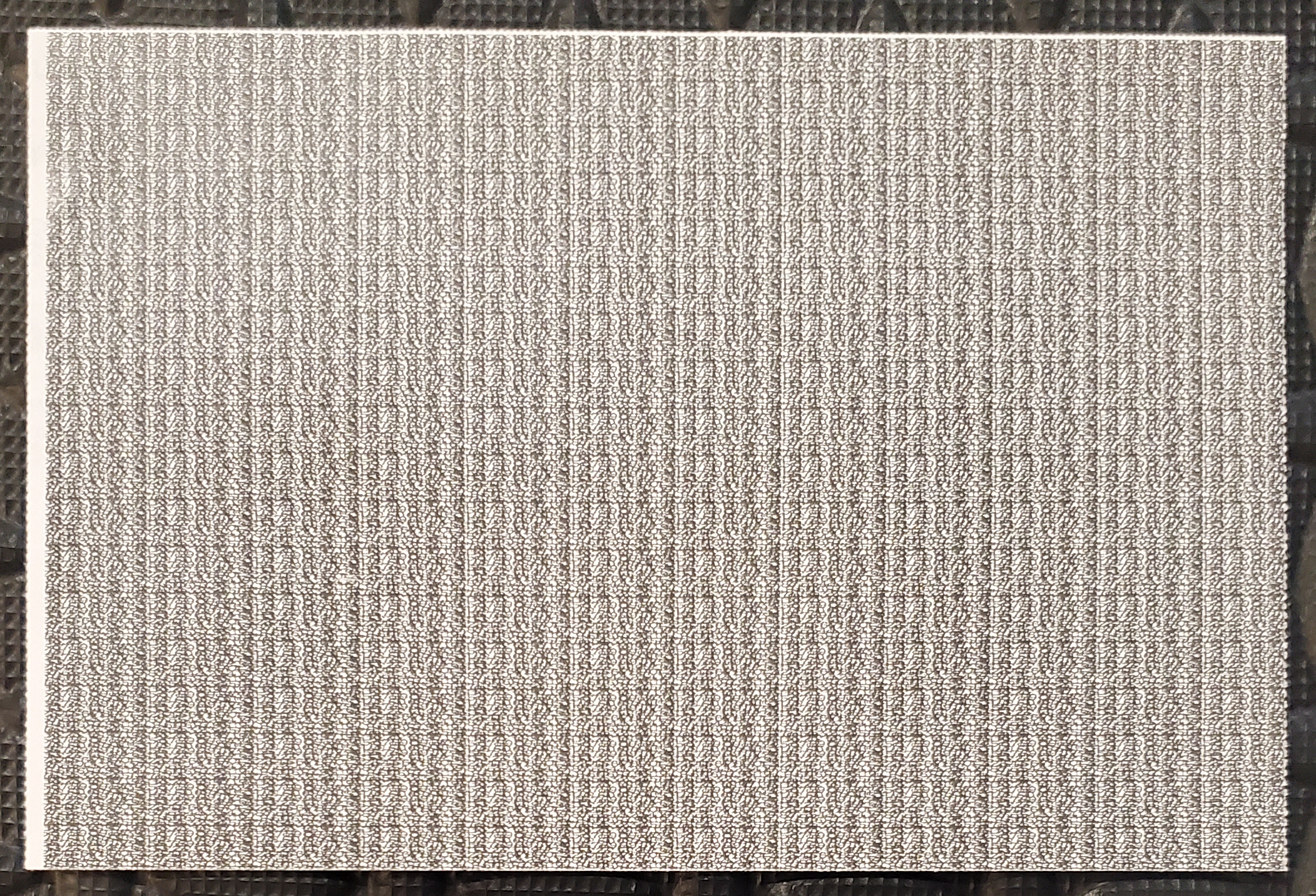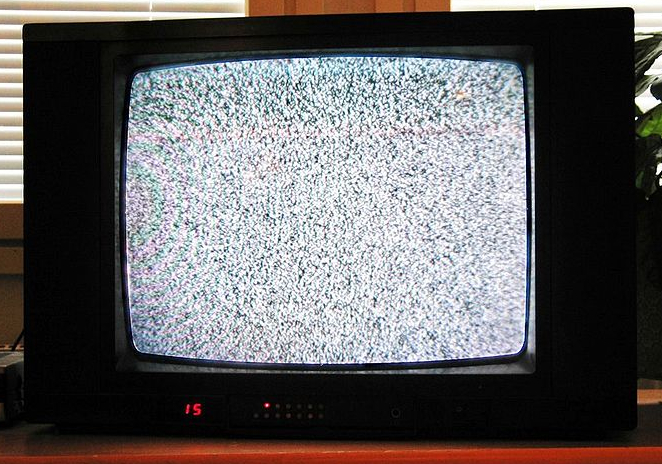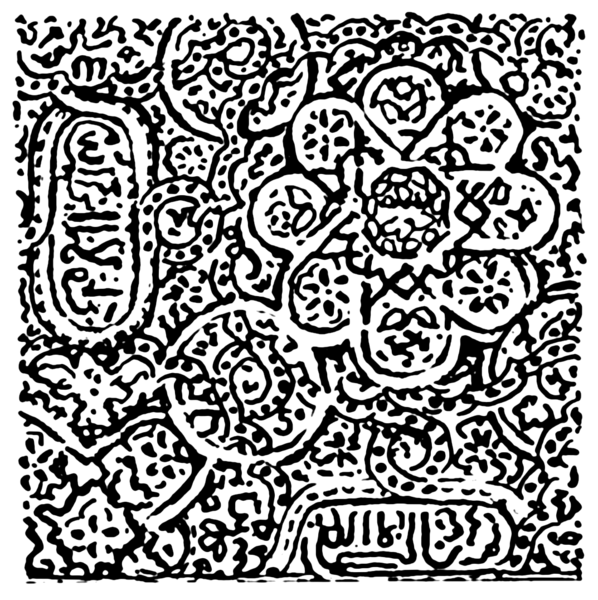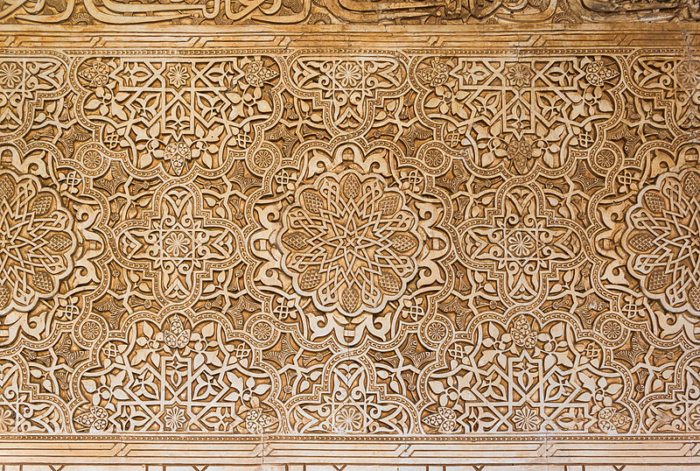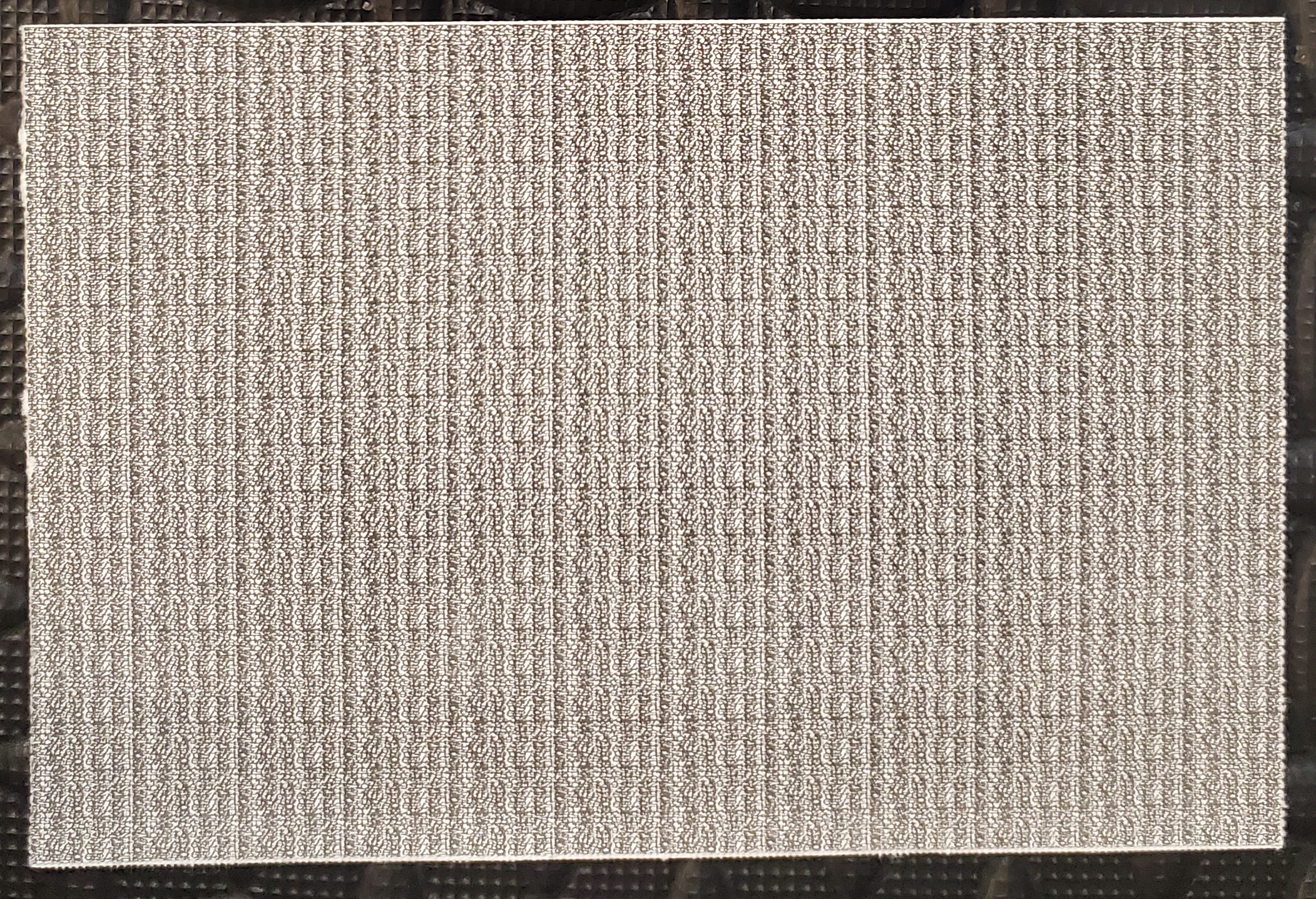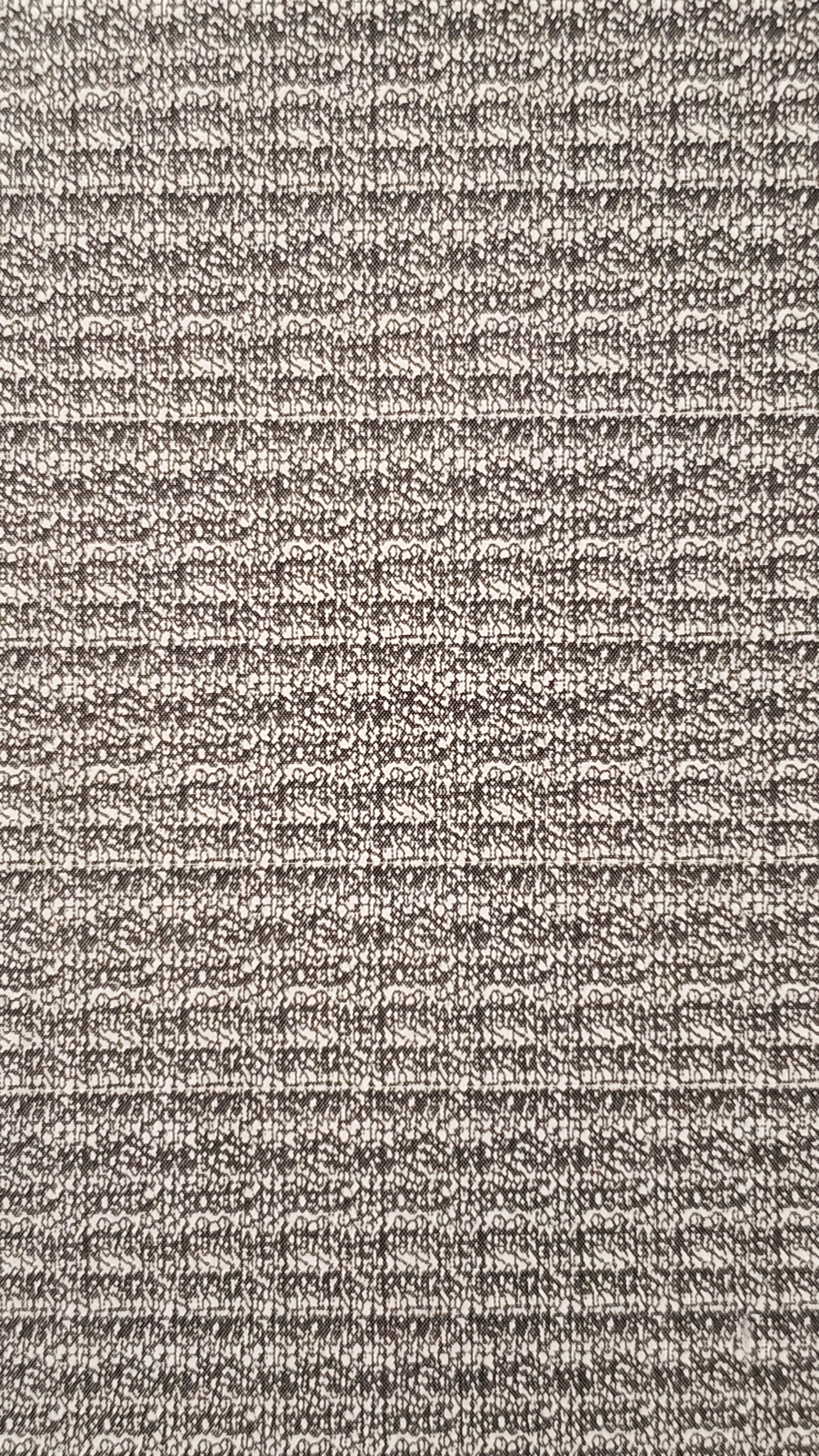“Order in Static” Exterior Pattern
Part of my broader examination of Security Envelope Art.
Last updated 02/04/2025. First posted 01/03/2025.
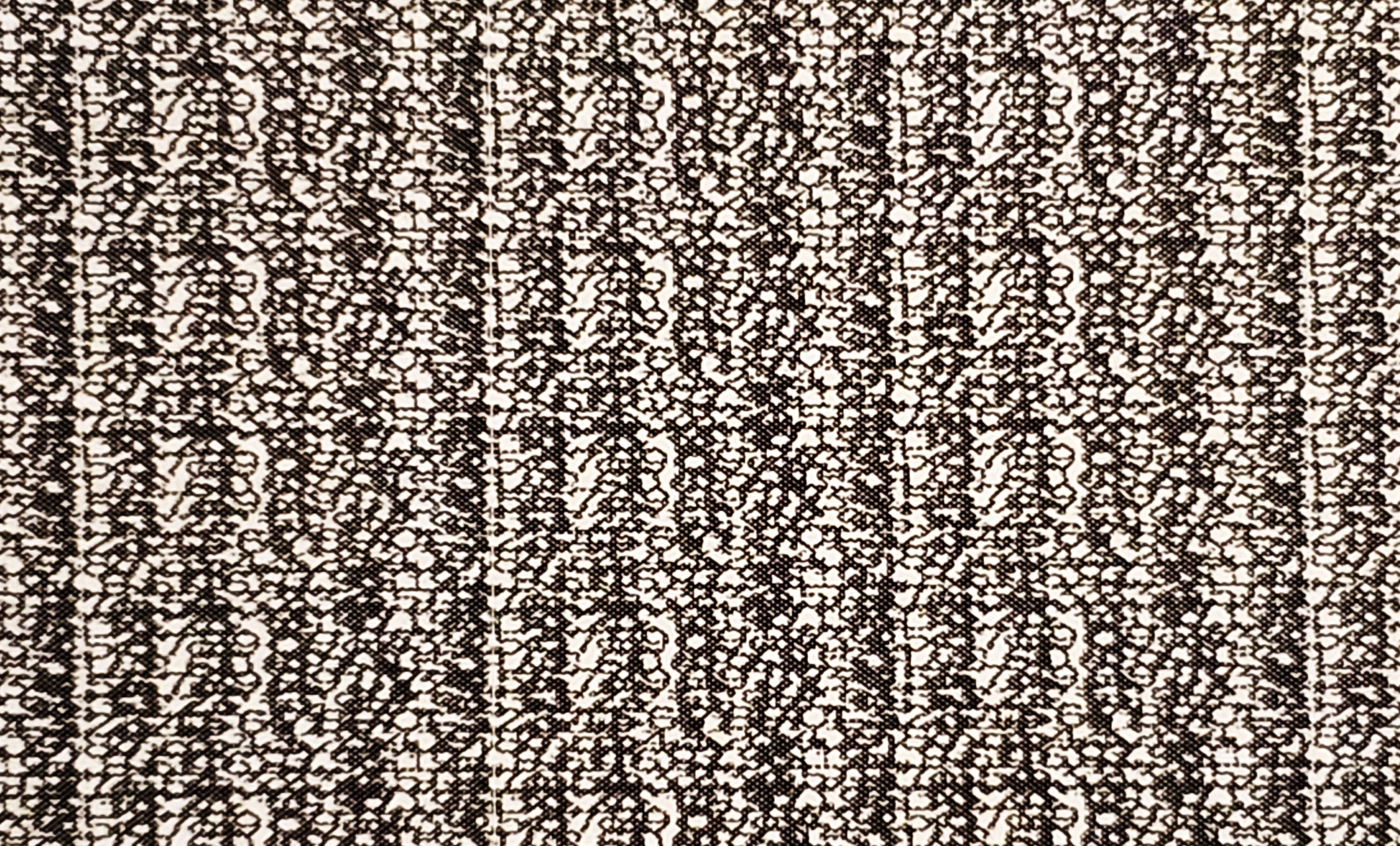
I found this interesting pattern on the backs of two different US census mailers.
Description & Analysis
This is one of the darkest and densest patterns I’ve ever seen.
It’s extremely intricate, but there’s an obviously repeating rectangle section that almost makes me think of a carved stamp pressed into ink and then paper again and again and again. It has organized rows and columns that become obvious when you hold it at any distance; you don’t have to search long to spot the repetitions.
This is why I’m calling it “Order in Static.” It’s a mess of graininess, but in clear, repeated chunks.
I have tried crossing my eyes and working on it like a Magic Eye, and it does click into place, but the only image it reveals is flat emptiness. It’s like looking at a 3D image of empty space.
Let’s pull out the single repeated cell and examine it–does this look like anything to us?
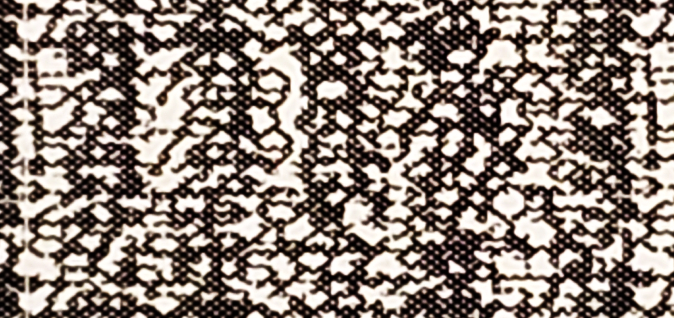 Let’s turn this on its side to see if any other patterns leap out.
Let’s turn this on its side to see if any other patterns leap out.
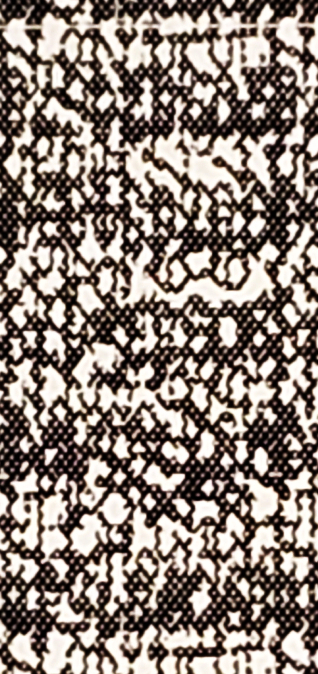 Hmm. It doesn’t automatically resemble anything by itself, but we can imagine it’s a rather chaotic embroidery project, or perhaps a haphazard arrangement of flowers and vines.
Hmm. It doesn’t automatically resemble anything by itself, but we can imagine it’s a rather chaotic embroidery project, or perhaps a haphazard arrangement of flowers and vines.
Blurring my eyes, I can make myself see almost anything in it, but it’s clear it’s not hiding any letters or secret imagery. Given its proportions, I could imagine it as some sort of techno-dystopian flag.
Influences
It’s reminiscent of television static or “snow” (most seen between 1940-2010), late 19th-century Victorian lace, or some particularly tight arabesque patterns and ornamentation.
The above two patterns are Arabic – the first, a line art drawing of an arabesque; the second is from the Alhambra in Granada, Spain, and was likely carved during the 14th century.
Of course, the Alhambra and the Victorian lace are both more ordered and geometrically representative. Meanwhile, the television static is more chaotic and unordered. This pattern sits somewhere in between.
It also reminds me of some abstract digital art that specifically tries to draw attention to the computerized aspects. There was a smattering of this in the 1980s and 90s when computers were new and the novelty of the medium was the focus.
It could also easily work as some sort of texture map.
Functionality
Given the nature of the official source of these envelopes, I’d expect it to be very good at its job.
The paper this is printed on is thicker than the average envelope, too, more of a cardstock material, so there’s already little chance of light shining through.
Notably, while most patterns are on the interiors of envelopes, these patterns are on the back exteriors. That’s because the mailer tears away and opens up with information printed on both sides of the interior instead.
Overall, it was very effective.
Here’s a final look at just one of them, positioned vertically.
Part of my broader examination of Security Envelope Art.
Archived & analyzed by Ethan J. Hulbert.
